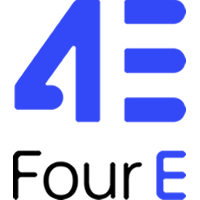
LTO
项目开始时间

2019年2月6日
关于
1. Background IntroductionLTO Network (https://www.ltonetwork.com/) is a blockchain platform focused on providing decentralized workflow automation and secure data sharing solutions. It targets enterprises and governments, offering a hybrid blockchain approach that combines public and private chains. The project was founded in 2014 and launched its mainnet in 2019. LTO Network emphasizes real-world adoption, with clients including the United Nations and various European government agencies.2. Core Website ContentThe website showcases LTO Network's solutions for decentralized identities, verifiable credentials, and workflow automation. Key sections include: use cases (land registry, legal processes, supply chain), technology overview, team information, and partnership network. The site highlights its Live Contracts technology - smart contracts that interact with real-world events through oracles. Documentation and developer resources are prominently featured, indicating a focus on technical adoption.3. Technical FeaturesLTO Network uses a unique hybrid architecture: private chains for sensitive data with anchors to a public chain for transparency. It employs a Leased Proof-of-Stake (LPoS) consensus mechanism. The platform supports GDPR compliance through its design, making it attractive for European clients. Live Contracts enable off-chain computation with on-chain verification. The network boasts 3-second block times and supports tokenization of assets and documents.4. Token EconomicsThe native token LTO serves multiple functions: network fees, staking rewards, and governance. Tokenomics include a deflationary model with transaction burning. Approximately 50% of transaction fees are burned. Stakers earn rewards from leasing tokens to node operators. The total supply is capped at 500 million LTO, with circulating supply around 420 million (as of 2023). The website provides clear token utility explanations but lacks detailed emission schedules.5. Competitive ComparisonCompared to Ethereum, LTO offers lower fees and GDPR compliance but lacks DeFi ecosystem. Versus VeChain (supply chain focus), LTO has stronger government adoption. Relative to Corda (enterprise blockchain), LTO provides public chain transparency. Unique differentiators include Live Contracts and hybrid architecture. However, it faces competition from other GDPR-compliant chains like Concordium. Market cap is smaller than most enterprise blockchain competitors.6. Risks and ChallengesPrimary risks include: limited brand recognition compared to major layer-1 chains, dependence on European market adoption, potential regulatory changes affecting hybrid chains, and competition from other enterprise-focused blockchains. Technical challenges involve scaling Live Contracts and maintaining the balance between privacy and transparency in its hybrid model. The project's success heavily relies on continued government and institutional adoption.7. Industry FutureLTO Network is positioned in growing sectors: enterprise blockchain (projected $137B by 2030) and digital identity solutions. Increasing GDPR enforcement could benefit its compliance-focused approach. The platform could capitalize on European blockchain initiatives like EBSI. Future success depends on expanding beyond current government use cases into broader commercial applications and potentially integrating with emerging technologies like AI for automated workflows.8. SummaryLTO Network presents a specialized blockchain solution with strong real-world adoption, particularly in European government applications. Its hybrid architecture and Live Contracts offer unique technical value propositions. While facing significant competition and adoption challenges, its focus on regulatory compliance and workflow automation addresses specific market needs. The project's long-term viability will depend on expanding its ecosystem and maintaining technological edge in the enterprise blockchain space. 更多>














































 看多
看多
 看空
看空